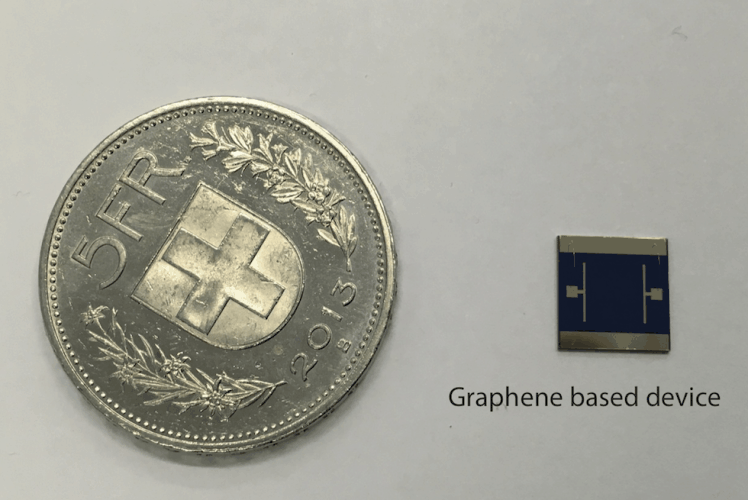Graphene sheds light on terahertz waves
Terahertz waves could be applied more broadly following the development of a technique to control the intensity and the polarization of terahertz light with graphene.

Terahertz waves allow for the detection of materials that are undetectable at other frequencies, but the use of these waves is limited by the absence of suitable devices and materials that control them.
Now, researchers at the University of Geneva (UNIGE), working with the Federal Polytechnic School in Zurich (ETHZ) and two Spanish research teams, have overcome this limitation with a technique that paves the way for a practical use of terahertz waves, in particular for imaging and telecommunications. The work is described in Nature Communications.
"The interaction between terahertz radiation and the electrons in graphene is very strong and we have therefore come to the hypothesis that it should be possible to use graphene to manage terahertz waves,” said Alexey Kuzmenko from the Department of Quantum Matter Physics of UNIGE’s Faculty of Sciences.
Working within the framework of the European project Graphene Flagship, the scientists have made a graphene-based transistor adapted to terahertz waves.
Register now to continue reading
Thanks for visiting The Engineer. You’ve now reached your monthly limit of news stories. Register for free to unlock unlimited access to all of our news coverage, as well as premium content including opinion, in-depth features and special reports.
Benefits of registering
-
In-depth insights and coverage of key emerging trends
-
Unrestricted access to special reports throughout the year
-
Daily technology news delivered straight to your inbox










Water Sector Talent Exodus Could Cripple The Sector
Well let´s do a little experiment. My last (10.4.25) half-yearly water/waste water bill from Severn Trent was £98.29. How much does not-for-profit Dŵr...